A frequent problem I see in my clients is a lack of ankle mobility, and more specifically, of range of motion in dorsiflexion (the action of taking your toes towards your knee). If you’re already convinced and just want the solutions, skip the next two paragraphs.
This mobility is very important: good range of motion in dorsiflexion allows your tibia (shin bone) to move forward freely, allowing your foot to stay fully on the ground for longer while walking (affording way more stability). The same can be said in squatting: with good ankle dorsiflexion, you never need to take your heel off the ground as you squat, and this relieves lots of pressure from your knees. Moreover, because of the shape of the bones in your feet, your ankle is more stable in dorsiflexion.
Lack of range of motion in the ankle therefore poses a few problems: notably when the pelvis moves forward (like in walking), the knee might hyperextend to compensate for the lack of mobility in the ankle. Generally, if a joint can’t move properly, others will take the brunt. In the case of the ankle, this might mean the knee (hyperextension as mentioned, or improper torque), hips, or even the internal joints of the foot (leading, for instance, to flat feet).
So now that we’ve established we want ample range of motion in ankle dorsiflexion, how do we go about it? Massage and other techniques of Soft Tissue Therapy can do wonders for you if you want to improve your dorsiflexion (you can book an appointment), but there are a few things you can do on your own too. I will present two approaches here. While both work well on their own, doing a bit of both is what will grant the best results. Obviously, these are only guidelines, you should follow them at your own risk and stop in case of pain.
The first approach is stretching. After exercise, before exercise, after a warm-up or as a warm-up (in which case, be very gentle and progressive!); every thing is good! There are three stretches that help us gain dorsiflexion range or motion:
- Gastrocnemius stretch: This is your standard calf stretch: start standing with your feet a step apart, support yourself at the front on a tree, wall, kitchen counter, whatever is to hand. First make sure that you start with your pelvis vertically above the back foot, and fully extend your knee (if your knee hyperextends, be careful not to put pressure on it, but extend it as far as it goes). Once this is established, move your pelvis forward, keeping your heel on the ground. You will feel a stretch on the top third of your calf. Once you’re comfortable with this, you can vary the angle you place your foot to stretch more parts of the muscle. You can also elevate your toes on a step, branch, stone, or other elevated surface, and drop your heel down (holding on to something so as not to fall, and control the amount of weight you put on your stretch).

- Soleus stretch: This is a slight variation on the first one: it’s basically the same, except with a bent knee. This means that bringing your pelvis forward will be less important, and you’ll have to also bring it down. You should feel a stretch on the middle third of your calf. You can also vary the angle of your foot to stretch more parts of the muscle.
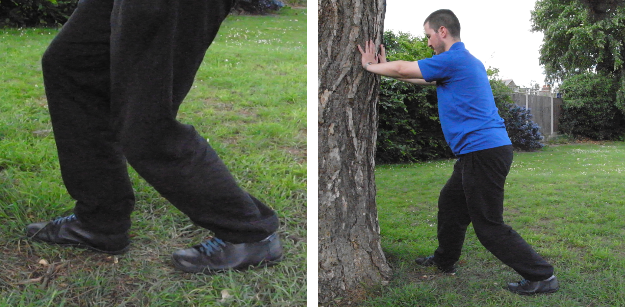
- Deep posterior compartment stretch: This is another variation, where you keep your toes flexed (this only works with shoes on) by resting your back foot on the back of the front one. You’ll feel a stretch just back of your shin bone, probably more on the inside of the shin.

The second approach is more of a “life hack”: stretching is all good and well, but it’s not something you do that often (even twice a day is not “often” in terms of what your body can do). So let me introduce my favourite piece of exercise equipment: stairs! I use stairs a lot in different ways to work on my lower body. Here is one of the ways: as you go down stairs, aim to keep your heel on the step as long as possible, aiming for both feet flat on two different steps (as I’m writing that, I don’t think every person can achieve this on every stair, but it’s only an aim). This will make you do some form of the previous stretches dozens of time, sending the message to your nervous system and soft tissue that it’s something they should be able to do. As a side effect (after the first few days of feeling, and possibly looking, slightly idiotic), going down the stairs will be way more stable, and your chance of tripping down greatly reduced.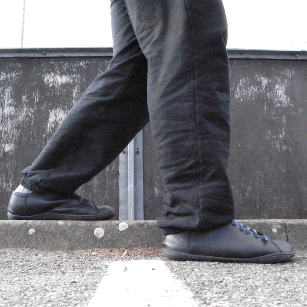
And now you can start working on your ankle mobility and stability! If this proves too challenging, feel free to make up your own, easier version of the exercises, or see a massage therapist to get you started. Likewise, if you feel some other restrictions to your dorsiflexion (because there are some other , less likely causes), we can help you get your ankles moving again!
Want more like this?
Check out the following blogs from massage therapists I know from around London:- On The Run Health and Fitness on running, nutrition and sports massage.
- The Soma Room on sports massage and exercise.
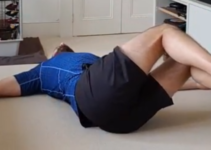

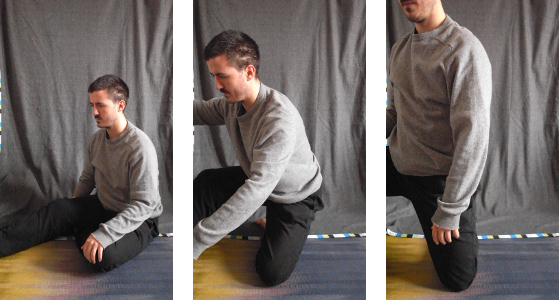
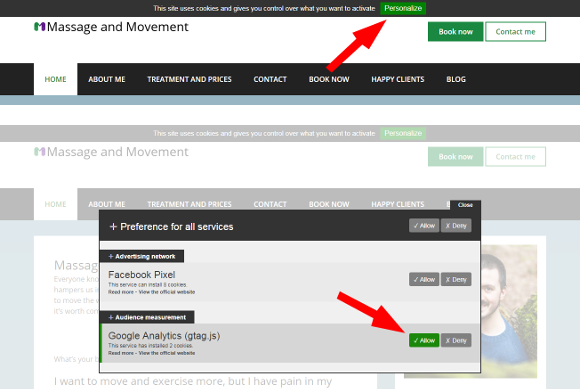
No Responses